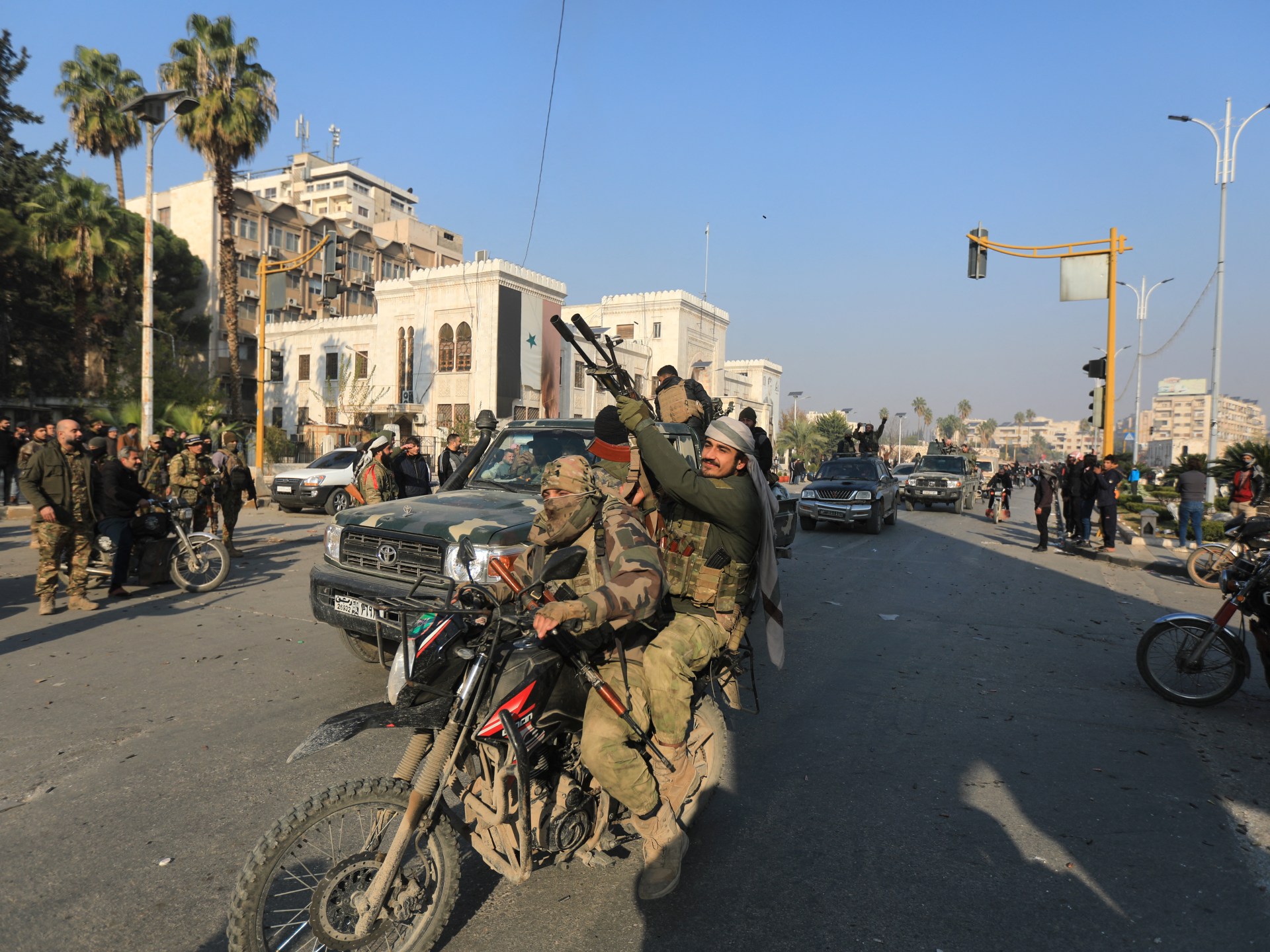

Opposition fighters in Syria captured the strategic city of Hama on Thursday in a matter of hours.
Fighters from Hayat Tahrir al-Sham (HTS), which means the Committee for the Liberation of the Levant, led the offensive as they stormed the city. Government forces quickly retreated.
Inhabitants appeared to welcome what many described as the liberation of their city from Syrian President Bashar al-Assad’s clutches.
One HTS fighter, who did not want to give his name, told Al Jazeera after entering Hama: “Thank God we liberated the city of Hama and now we are securing [it]. With God’s blessing, we will enter the city of Homs next.”
Analysts and observers believe antigovernment fighters could capture most of the country, but say Hama has a particular value for the Syrian opposition.
This is what we know about the strategic and symbolic significance of the city.
Why is Hama so significant in Syria?
The city witnessed one of the most brutal acts of repression in Syrian history, analysts and observers say.
Advertisement
In 1982, al-Assad’s father, Hafez, who was then president, ordered the killing of members of the Muslim Brotherhood who were occupying the city.
The targeted people were part of a movement trying to remove the al-Assads from power and had taken over the city after ambushing army troops.
They killed senior officers and leaders within the government and looted their homes, according to a report by the European Council for Foreign Relations, a think tank based in the United Kingdom.
The group’s operations attracted widespread support and triggered an uprising against the government in the city.
The government responded by bombing Hama for several days while Syrian troops moved in to crush the uprising.
![Syrian opposition fighters standing on a mat bearing drawings of Syrian President Bashar al-Assad and his late father Hafez [AFP]](https://www.aljazeera.com/wp-content/uploads/2015/11/6ab5ad7c0408449c8fe3cc2c044886e2_18.jpeg?w=770&resize=770%2C433)
In the following weeks, Syrian forces laid siege to the city, going door to door to kill, torture and arrest any young men they believed to be with the opposition, according to Amnesty International.
It is estimated that between 10,000 and 40,000 people were killed in Hama – the precise figure is still unknown.
“It was the awareness of the mass arrests and executions that terrified people,” said Robin Yassin-Kassab, an expert on Syria and the co-author of, Burning Country: Syrians in Revolution and War.
“[The episode] made Syria a kingdom of silence,” he told Al Jazeera.
The 2011 Syrian uprising momentarily shattered that barrier of fear.
As protests swept the country, inhabitants of Hama gathered and sang “Yalla erhal ya Bashar,” which translates to “Come on and leave, Bashar!”
Advertisement
Protesters in Hama carried olive branches and crowds reached more than 500,000 people, activists told Al Jazeera in 2011.
What did the Syrian regime do to Hama in 2011?
All across Syria, government forces violently repressed demonstrations in 2011, including in Hama.
For more than a decade, the regime barrel-bombed cities and arrested and tortured activists and perceived opponents.
The government often relied on Alawi, as well as Shia, armed groups, both from Syria and across the region, to crack down on protesters.
The Alawi sect in Syria is an offshoot of Shia Islam to which al-Assad and his family belong.
Yassin-Kassab said many believe the barrier of fear has been shattered for a second time after rebel groups captured Aleppo and now Hama within days.
In Hama, scenes of prisoners of conscience being liberated from the central prison prompted celebrations by Syrians.
In the city, inhabitants tore down a statue of Hafez al-Assad.
“I presumed Hama is where [the government and its loyalists] would put up a serious fight … but they weren’t capable,” said Yassin-Kassab.
“After Hama [was liberated], I thought to myself: ‘The Syrian revolution is back.’”

Is Hama strategically important?
Very much so.
The capture of Hama allows rebel groups to keep moving down the Aleppo-Damascus M5 highway towards Homs, which if captured, could split apart the regime’s strongholds.
Advertisement
Opposition fighters appear to have reached the outskirts of the city, according to reports, while thousands of people have fled.
Homs has a larger population of Alawis than Hama, but HTS has reportedly offered assurances that minorities in Syria will not be harmed.
The city is effectively a gateway to Syria’s capital, Damascus, as well as to the coastal provinces of Tartous and Latakia, which are Alawi heartlands and where Russian naval and air bases are located.
If Homs falls to the opposition, then opposition fighters are likely to push on to try to take Damascus, said Yassin-Kassab.
“I do think if Homs falls, then that will be the beginning of the end for the [Assad regime],” he told Al Jazeera.
Related News

Irish support for Palestinians stands firm, despite Israeli anger

No security threat from reported drone sightings, US federal agencies state

Notre-Dame Cathedral reopens five years after devastating blaze


